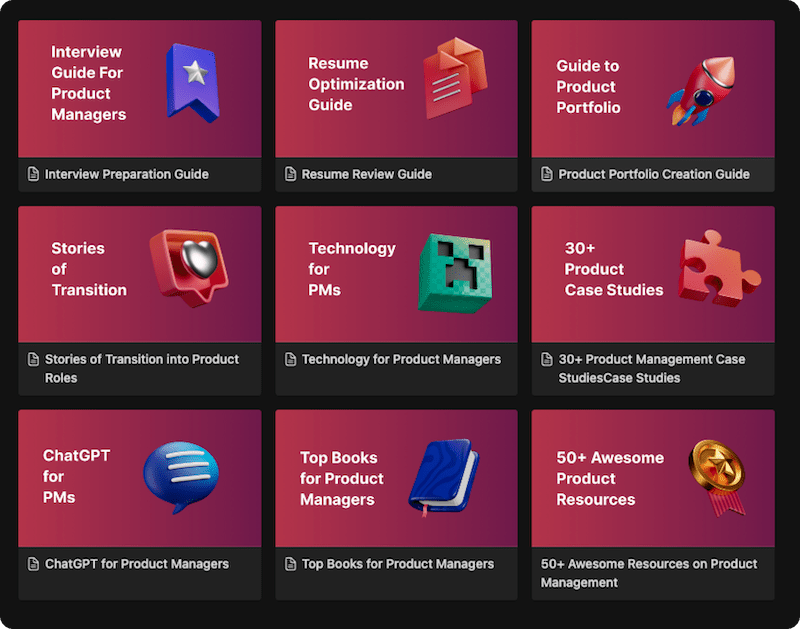Imagine you’re in the final round of your dream product manager interview. Everything is going perfectly until the hiring manager leans forward and says, “Yesterday, the number of Daily Active Users (DAU) on our app dropped by 15%. What do you do?” Your heart rate quickens. This isn’t a hypothetical design question; it’s a crisis. This is an RCA Question, and your response will reveal more about your product sense and analytical thinking than almost any other question.
Whether in an interview or on the job, problems like this are inevitable. A key metric plummets, negative reviews spike, or a critical feature fails. The difference between a novice and an expert product manager is how they react. Do they panic and treat the symptoms, or do they act like a detective, methodically investigating until they find the true culprit? This detective work has a name: Root Cause Analysis (RCA).
This guide will demystify RCA entirely. We will equip you with a powerful, step-by-step framework to confidently dissect any problem, whether it’s a high-stakes interview question or a real-world fire drill. By the end, you’ll understand how to move beyond the surface-level symptoms and pinpoint the fundamental issue, enabling you to propose solutions that stick.
Definition and Origin
The concept of Root Cause Analysis was pioneered by Sakichi Toyoda, the founder of Toyota Industries. It became a cornerstone of the Toyota Production System in the mid-20th century. Toyoda developed the famous “5 Whys” technique, a simple yet profound method of inquiry. He taught his teams that whenever a problem occurred, they should ask “Why?” five times. By the fifth “Why?”, he reasoned, the root cause of the problem would almost always become clear.
This disciplined approach moved Toyota away from a culture of simply fixing defects to one of continuously improving processes to prevent defects from ever happening. Today, this methodology is a fundamental practice not just in manufacturing, but in software development, healthcare, and, most importantly for us, product management.
Why RCA is a PM’s Superpower
Mastering RCA is not just about passing interviews; it’s about being an effective product leader.
- It Prevents Recurring Problems: By solving the root cause, you ensure the same fire doesn’t break out again next week. This saves your team countless hours and builds a more stable, reliable product.
- It Drives Smart Decision-Making: RCA forces you to be data-informed and evidence-based. It moves you away from gut feelings and toward a structured investigation, leading to better, more logical conclusions and solutions.
- It Builds Credibility and Trust: When you can calmly and logically dissect a complex problem in front of your team or leadership, you build immense credibility. It shows you are in control and can be trusted to navigate a crisis. Effective Stakeholder Management depends on this trust.
- It Fosters a Culture of Improvement: A blameless RCA process encourages teams to see problems as opportunities to improve the system, rather than opportunities to blame individuals. This is key to a healthy Product-Led Culture.
A 4-Step Framework to Solve Any RCA Question
Whether you have 30 minutes in an interview or three days in the office, a structured approach is the key to success. For a comprehensive deep dive specifically on interview tactics, you can read our complete guide on how to approach RCA questions. Here, we’ll outline a universal 4-step framework that is robust, memorable, and works for almost any scenario.
Step 1: Clarify and Scope (The ‘What’)
Never jump straight into solving. The first and most critical step is to ask clarifying questions to understand the problem’s exact scope. This shows your interviewer or team that you are methodical.
- Metric: “You said DAU dropped. Is that the only metric affected? What about Monthly Active Users (MAU), session duration, or retention rate?”
- Magnitude: “A 15% drop is significant. Is that a sudden cliff, or has it been a gradual decline over a few days?”
- Timeline: “When exactly did this drop begin? Can we pinpoint it to the hour?”
- Scope: “Is this drop global, or is it specific to a certain geography, platform (iOS/Android/Web), user demographic, or user segmentation?”
Step 2: Hypothesize and Structure (The ‘Why’)
Once you have a clear picture of the problem, brainstorm potential causes. The key is to structure your hypotheses logically. A great way to do this is to categorize them.
- Internal Factors (Things we control):
- Technical Issues: A recent code deployment, a server outage, a bug in a new feature, API failures.
- Product/UX Changes: A confusing new UI, a change in the user onboarding flow, a feature deprecation.
- Marketing/Comms: A change in ad spend, a viral negative PR story, a confusing email campaign.
- External Factors (Things we don’t control):
- Competitor Actions: A major competitor launched a new product or a viral marketing campaign.
- Market Trends/Seasonality: Is it a major holiday? A global event affecting user behavior?
- Platform Issues: An outage at AWS, a change in the Apple App Store or Google Play Store policies.
The Fishbone (or Ishikawa) Diagram is a fantastic tool for visualizing these categories.
Step 3: Investigate and Prioritize (The ‘How’)
Now, turn your hypotheses into a plan of action. For each potential cause, explain how you would validate or invalidate it. This is where you bring in the data.
- “To test the ‘bad code deployment’ hypothesis, I’d first check our release logs to correlate the drop with a specific release plan. Then, I’d ask engineering to check error monitoring tools like Sentry or Datadog for any spikes in exceptions.”
- “To test the ‘competitor action’ hypothesis, I’d check our social media monitoring tools and Google Trends to see if our competitor’s brand mentions have spiked.”
- “To test the ‘confusing UI’ hypothesis, I’d look at product analytics to see if there are high drop-off rates on a specific new screen. I might also look for rage clicks.”
This is where you use the 5 Whys. Once you’ve isolated a likely cause, you drill down.
Step 4: Conclude and Recommend (The ‘So What’)
After your investigation, summarize your findings. State what you believe the root cause is, based on the evidence. But don’t stop there. The final step is to propose a plan of action.
- Immediate Solution: “The root cause appears to be a bug in our new login flow that affects Android users on older OS versions. The immediate fix is to roll back the feature for that segment.”
- Long-Term Prevention: “To prevent this in the future, I recommend three actions: 1) Expand our user acceptance testing criteria to include a wider range of older operating systems. 2) Implement better monitoring for login success rates. 3) Hold a product retrospective to understand how this bug made it to production.”
The PM’s RCA Toolkit: Key Techniques
The 5 Whys
This is your scalpel for deep investigation. Let’s apply it to our example.
- Problem: The DAU dropped by 15%.
- 1. Why? A significant number of users couldn’t log in this morning.
- 2. Why? The login service was returning an authentication error.
- 3. Why? The authentication service couldn’t connect to the user database.
- 4. Why? The database had run out of available connections.
- 5. Why? A recent feature deployment created a database connection leak, which slowly consumed all available connections over several hours.
- Root Cause: The connection leak bug. Notice we didn’t stop at “the server was down.”
The Fishbone (Ishikawa) Diagram
Use this for structuring your brainstorming in Step 2. It helps ensure you consider all possible causes.
The diagram would have a central spine (“DAU Drop”) with branches for categories like “Product,” “Technical,” “Marketing,” “Competitors,” and “External Events.”
Common Mistakes to Avoid in RCA
- Jumping to a Conclusion: The most common mistake. Don’t latch onto the first plausible explanation. Stay open-minded and investigate multiple hypotheses.
- Stopping Too Soon: Don’t stop at the first “Why?”. A “server outage” is a symptom, not a root cause. The root cause is why the server went down.
- The Single Cause Fallacy: Complex problems often have multiple contributing root causes. Don’t assume there’s only one culprit.
- Creating a Culture of Blame: RCA should be a blameless process focused on systems and processes, not individuals. The goal is to learn, not to punish.
Conclusion
Root Cause Analysis is more than just a framework; it’s a mindset. It’s the disciplined curiosity to look past the obvious, the structure to turn chaos into a methodical investigation, and the wisdom to know that fixing a system is always better than patching a symptom. Whether you’re in a high-pressure interview or leading your team through a real product crisis, this approach transforms you from a firefighter into a fire marshal—someone who not only puts out the fire but understands its origin and rebuilds to ensure it never happens again.
Mastering this skill won’t happen overnight. It requires practice, patience, and a relentless focus on the “why.” Start applying this thinking to small problems you encounter every day. Ask “why” one more time than you normally would. By cultivating this habit, you’ll be building one of the most durable and valuable skills in a product manager’s toolkit, empowering you to build better products, lead more effective teams, and solve the toughest challenges that come your way.
FAQ’s
Practice! Pick a familiar app (like Spotify or Uber) and a metric. Then, imagine it drops by 10% and talk through the 4-step framework out loud. Think about the app’s features, user base, and potential failure points. For more specific tactics and a detailed guide on structuring your answer, check out our complete guide on how to approach RCA questions.
“Five” is a guideline, not a strict rule. The goal is to continue asking “why” until you reach a fundamental process or system issue that, if fixed, would prevent the problem from happening again. Sometimes it takes three whys, sometimes it might take six.
A symptom is the visible or obvious manifestation of a problem (e.g., “the website is slow”). A root cause is the fundamental reason the problem exists (e.g., “an inefficient database query is consuming all the server’s memory”). Fixing the symptom (restarting the server) is a temporary fix; fixing the root cause (optimizing the query) is a permanent solution.
Absolutely! The same framework can be used to understand what went right. By finding the root cause of a positive outcome, you can learn how to replicate that success in the future. This is a key part of Growth Product Management.
Learn better with active recall quiz
How well do you know What are RCA Questions? A Complete Guide to Root Cause Analysis (2025) Let’s find out with this quick quiz! (just 10 questions)


